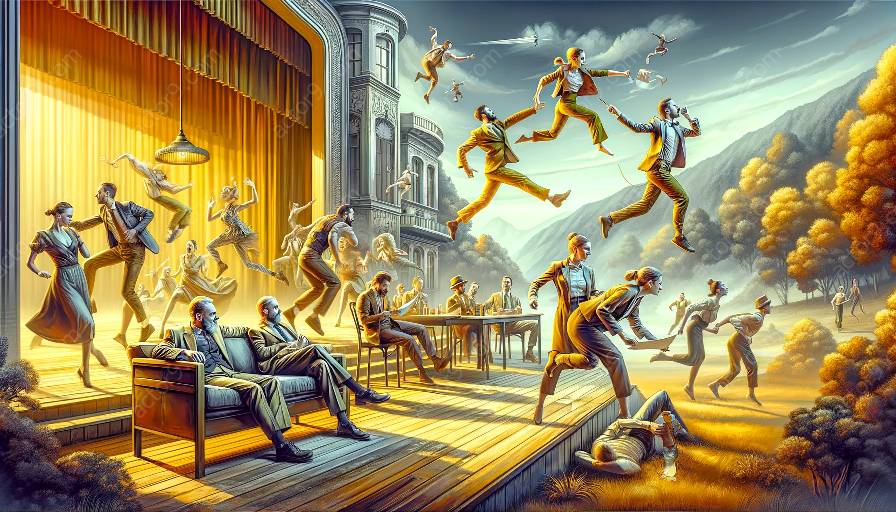Physical comedy has been a timeless and universal form of entertainment, captivating audiences through the skillful combination of physical prowess and comedic timing. This article will delve into the evolution of physical comedy in theatrical performances and its significant impact on shaping the future of humor in entertainment. In particular, we will explore the innovative techniques and comedic aspect of physical theatre that have contributed to its enduring popularity.
The Art of Physical Theatre
Physical theatre is a unique form of performance that emphasizes the use of the body as the primary means of storytelling. It intertwines elements of dance, mime, acrobatics, and exaggerated physical movements to convey narratives and evoke emotional responses from the audience. This art form requires performers to possess exceptional physical dexterity, expressiveness, and comic timing to effectively communicate with the audience.
Evolution of Physical Comedy
Historically, physical comedy has played a pivotal role in theatrical performances across various cultures and time periods. From the comedic antics of ancient Greek theater to the slapstick humor of commedia dell'arte in the Italian Renaissance, physical comedy has continuously evolved and adapted to reflect the changing tastes and sensibilities of audiences.
The 20th century witnessed a significant shift in the portrayal of physical comedy, with notable innovators such as Charlie Chaplin, Buster Keaton, and Harold Lloyd revolutionizing the art form through their silent film performances. These comedic pioneers demonstrated the power of physical expression and body language as potent tools for eliciting laughter and conveying profound human experiences.
Comedic Aspects of Physical Theatre
Comedic elements are integral to physical theatre, as performers rely on exaggerated gestures, facial expressions, and dynamic movement to convey humor and engage the audience. The fusion of physical agility, timing, and improvisational skills enables physical comedians to elicit laughter and create memorable comedic moments that transcend language barriers.
Furthermore, physical theatre often incorporates elements of irony, absurdity, and unexpected physical interactions to subvert expectations and generate comedic tension. The juxtaposition of exaggerated physicality and situational humor adds depth and richness to comedic storytelling, appealing to a diverse range of spectators.
Shaping the Future of Humor in Performance
As contemporary trends in entertainment continue to evolve, physical comedy remains a fundamental component in shaping the future of humor in performance. The seamless integration of technology, multimedia, and interdisciplinary collaborations has expanded the possibilities for incorporating physical comedy into diverse artistic endeavors, from circus acts and variety shows to avant-garde theatrical productions.
Moreover, the enduring appeal of physical comedy lies in its ability to evoke genuine human connections and evoke laughter through universal themes and relatable experiences. The timeless art of physical comedy continues to inspire and influence emerging artists and performers, ensuring its enduring legacy in the realm of entertainment.
Conclusion
In conclusion, the theatrical innovations in physical comedy have left an indelible mark on the future of humor in performance. Through its rich history, evolution, and integration of comedic aspects, physical theatre has continued to captivate audiences and establish itself as a timeless form of artistic expression. The dynamic interplay of physicality and humor has not only shaped the landscape of entertainment but has also transcended cultural and linguistic barriers, uniting diverse audiences in shared moments of laughter and joy.




































